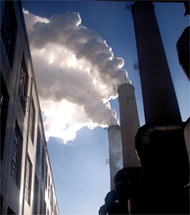Looking for more insights?
Sign up to stay informed about our latest article releases.
The blue-green algae outbreak in Taihu Lake, Jiangsu Province, in June and the air pollution problem in Beijing during the same month have rung the alarm bell for China's environmental protection efforts. From the State Council's working meeting on the steel industry to the Comprehensive Plan for Energy Conservation and Pollution Reduction launched in early June, it's clear that the central government has realized the serious environmental challenges it faces and is determined to make some changes, starting with the steel industry. However, pollution control faces a number of challenges, epitomizing the clash between full-steam-ahead economic development and environmental protection initiatives. China Knowledge at Wharton explores the issue.

Sign up to stay informed about our latest article releases.